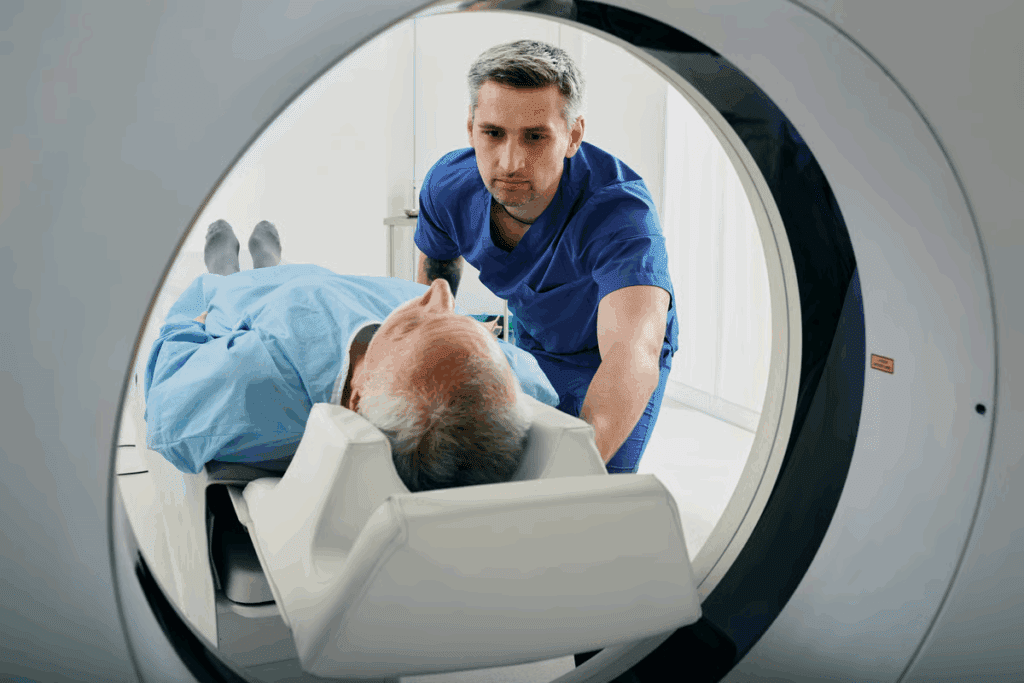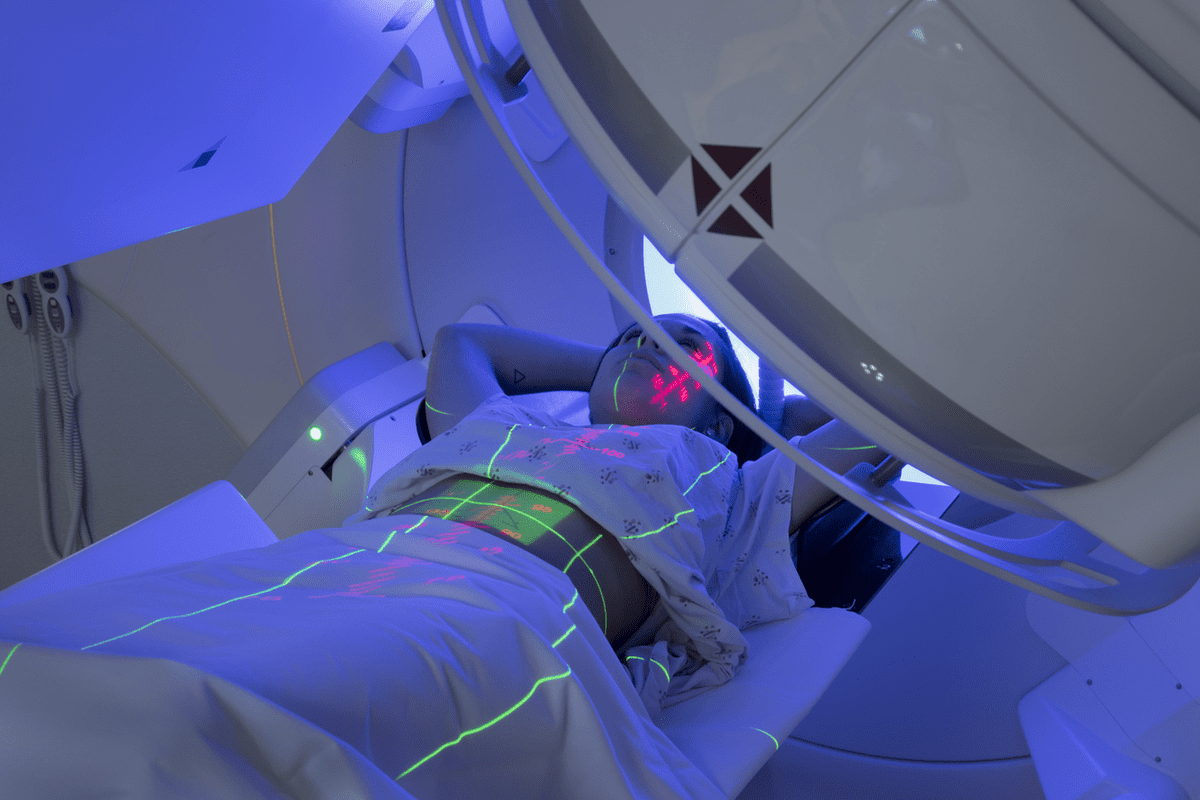
Blood clotting is key to stopping too much bleeding when we get hurt. It’s vital for our survival. But, clots that form in blood vessels can be dangerous.
The process of dissolving a blood clot is called fibrinolysis. It helps blood flow normally again. Knowing how clotting and fibrinolysis work is important for understanding our blood system.
Getting care from experts, like at Liv Hospital, is vital. They help keep patients safe and healthy with blood clotting issues.
Key Takeaways
- Blood clotting is essential to prevent excessive bleeding during injuries.
- The dissolution of a blood clot is called fibrinolysis.
- Fibrinolysis helps restore normal blood flow.
- Abnormal clot formation can be life-threatening.
- Expert care is vital for managing blood clotting conditions.
The Blood Clotting Process: An Overview

Blood clotting is a complex process that happens when the body finds an injury. It involves many parts, like platelets and proteins in the blood, like fibrinogen. When a blood vessel gets hurt, the body quickly tries to stop too much blood from leaking out by making a clot.
The Physiological Mechanism of Coagulation
Coagulation starts when platelets stick to the injury, making a platelet plug. This plug gets stronger with a fibrin clot, made by chemical reactions with clotting factors. The clotting process is a series of steps, each one leading to the next, until a stable clot is formed.
The Importance of Blood Clotting in Wound Healing
Blood clotting is key in wound healing. It seals the injured blood vessel and stops too much blood from leaking. The clot also helps cells move in for healing. This reduces bleeding and infection risks, helping the body fix damaged tissues.
In short, blood clotting is vital for keeping the body stable and helping wounds heal. Knowing how blood clotting works helps us understand how the body reacts to injuries and how to help it in different situations.
What Is the Dissolution of a Blood Clot Called? Understanding Fibrinolysis

The body’s ability to dissolve blood clots is called fibrinolysis. It’s key to keeping blood vessels healthy. This process helps blood flow normally after a clot forms.
The Definition and Process of Fibrinolysis
Fibrinolysis is how the body breaks down blood clots. It’s a series of chemical reactions that break down fibrin, the main clot component. First, plasminogen is turned into plasmin, the enzyme that breaks down fibrin.
The Role of Plasmin in Breaking Down Fibrin
Plasmin is the main enzyme in fibrinolysis. It breaks down the fibrin mesh in blood clots. This makes the clot dissolve, allowing blood to flow again.
Restoring Normal Blood Flow Through Clot Dissolution
Dissolving blood clots through fibrinolysis is vital. It prevents tissue damage from lack of blood flow. By restoring blood flow, fibrinolysis keeps tissues healthy and organs functioning well.
The Delicate Balance: Clotting vs. Dissolution
A delicate balance exists between blood clotting and dissolution. This balance is key for maintaining hemostasis. Hemostasis is the body’s ability to keep blood flowing while forming clots when needed, like during injuries.
How the Body Maintains Hemostasis
The body keeps hemostasis through a complex mix of pro-coagulant and anti-coagulant factors. Pro-coagulant factors help form clots, while anti-coagulant factors stop excessive clotting. The fibrinolytic system, which dissolves clots, is also vital. This balance ensures clots form when needed and dissolve when not needed.
When the Balance Is Disrupted: Clinical Implications
When this balance is disrupted, it can lead to serious health issues. For example, hypercoagulability can cause many blood clots to form on their own. This can lead to severe conditions like deep vein thrombosis (DVT) or stroke. On the other hand, impaired fibrinolysis can prevent clots from dissolving, also causing thrombotic events.
| Condition | Description | Clinical Implication |
| Hypercoagulability | State of increased clot formation | Increased risk of DVT and stroke |
| Impaired Fibrinolysis | Reduced ability to dissolve clots | Thrombotic events due to clot persistence |
The Dual Importance for Cardiovascular Health
Keeping the balance between clotting and dissolution is vital for heart health. Proper clot formation stops excessive bleeding during injuries. Timely clot dissolution ensures blood flow is restored, preventing tissue damage from lack of blood.
Recent research shows that inappropriate clot formation is a major cause of heart attacks and strokes. Understanding and maintaining this balance is key for heart health.
Key Components Responsible for Blood Clotting
It’s important to know what makes blood clotting work. This process keeps us from bleeding too much when we get hurt. It involves many parts working together.
Platelets: The First Responders in Clotting
Platelets are tiny cells that start the clotting process. When a blood vessel gets hurt, platelets stick to the injury. They form a plug that stops bleeding and helps the clotting process.
Clotting Factors and Their Functions
Clotting factors are proteins in our blood that help it clot. There are 13 of them, each with a number (I to XIII). They work in a sequence to create a fibrin clot.
The Essential Role of Calcium and Vitamin K
Calcium and vitamin K are key for clotting. Calcium helps clotting factors bind to surfaces. Vitamin K makes some clotting factors work. Without them, clotting doesn’t happen right.
The parts of blood clotting work together to stop bleeding. But they also make sure we don’t get too many clots. Knowing how they work helps doctors treat clotting problems.
The Step-by-Step Process of Blood Coagulation
It’s important to know how blood coagulation works. This process, also known as clotting of blood, stops bleeding after an injury. It involves several steps to keep bleeding under control.
The Initiation Phase: Triggering the Clotting Cascade
When a blood vessel is damaged, the body starts the clotting process. This damage exposes collagen and tissue factor. These substances activate platelets and start the coagulation of blood.
The clotting cascade is a series of chemical reactions. They lead to the creation of a fibrin clot.
The Amplification Phase: Building the Clot Structure
In the amplification phase, the clot gets stronger. Various clotting factors are activated. They work together to make the clot more stable.
This phase is key. It ensures the clot can handle the pressure of blood flow.
The Propagation Phase and Final Clot Formation
The propagation phase adds more stability to the clot. Fibrin is deposited, turning fibrinogen into fibrin. This forms the clot’s structure.
The final clot is strong and seals the injured blood vessel. This stops further bleeding. The process of what forms blood clots is complete, and healing can start.
| Phase | Description | Key Events |
| Initiation | Triggering the clotting cascade | Exposure of collagen and tissue factor, platelet activation |
| Amplification | Building the clot structure | Activation of clotting factors, reinforcement of the initial clot |
| Propagation | Final clot formation | Fibrin deposition, stabilization of the clot |
The blood clotting meaning covers the whole process, from start to finish. Knowing this helps us understand how the body keeps us safe from bleeding.
Pathological Blood Clotting: Understanding Thrombosis
Thrombosis happens when blood clotting goes wrong, causing clots in blood vessels. This can be very dangerous, as it can block blood flow to important organs.
Inappropriate Clot Formation Mechanisms
Thrombosis is when the body’s clotting process gets out of balance. Blood clotting is usually good, stopping bleeding when a vessel is hurt. But in thrombosis, clots form without injury or dissolve too slowly.
The process involves the blood vessel wall, platelets, and clotting factors. Damage to a vessel starts the clotting cascade. In thrombosis, this process is wrongly triggered, causing clots in healthy vessels.
The Link Between Thrombosis and Heart Attack and Stroke
Thrombosis is a major cause of heart attacks and strokes. A clot in a coronary artery can cut off blood to the heart, causing a heart attack. A clot in a cerebral artery can block oxygen and nutrients to the brain, leading to a stroke.
Understanding thrombosis and its risks is vital. Quick medical action is key to managing these conditions and avoiding serious damage.
Risk Factors for Abnormal Clotting
Many things can raise the risk of thrombosis. Genetic factors like the factor V Leiden mutation and conditions like cancer or obesity are examples. Lifestyle choices, like smoking or being inactive, also play a role.
Knowing these risk factors helps in prevention. Identifying high-risk individuals allows for early action. This can include changing lifestyle habits or using anticoagulant therapy to stop clots.
Medical Specialists for Blood Clotting Disorders: The Role of Hematologists
Hematologists are doctors who focus on blood disorders, including clotting issues. They are experts in diagnosing and treating these problems. Their knowledge is key to managing blood clotting disorders.
What Is a Hematologist?
A hematologist is a doctor who studies blood and its disorders. They handle complex cases involving blood clots and bleeding disorders. They work with other doctors to give patients the best care.
When to Consult a Hematologist for Blood Clotting Issues
If you have symptoms like recurrent clots or unexplained bleeding, see a hematologist. They can evaluate your condition and suggest treatments. You might need to see a hematologist if you have:
- Recurrent or deep vein thrombosis (DVT)
- Unexplained bleeding or bruising
- Family history of blood clotting disorders
- Abnormal blood test results indicating clotting issues
Diagnostic Approaches for Clotting Disorders
Hematologists use different tests to diagnose clotting disorders. These include:
- Blood tests to check clotting factors and platelet count
- Genetic testing to find inherited clotting disorders
- Imaging studies to find clots in veins or arteries
Knowing about hematologists helps patients get the right medical care. This leads to better health outcomes.
Clinical Significance of Proper Clot Dissolution
Proper clot dissolution is key to keeping our blood vessels healthy. It’s vital for our bodies to break down clots and restore blood flow. This process, called fibrinolysis, is essential for our health.
Consequences of Impaired Fibrinolysis
When fibrinolysis doesn’t work right, it can cause big problems. It can lead to conditions like thrombosis and atherosclerosis. This happens because the body can’t break down clots, causing them to build up.
“The balance between clot formation and dissolution is critical for maintaining vascular health”
The Impact on Vascular Health
Impaired fibrinolysis affects our blood vessels a lot. It can cause long-term issues like deep vein thrombosis and pulmonary embolism. It’s important to dissolve clots properly to avoid these problems.
Balancing Clotting and Dissolution in Clinical Practice
In treating heart diseases, finding the right balance is key. Doctors use anticoagulants to stop clots and thrombolytics to dissolve them. A doctor said, “Finding the right balance is essential for managing heart disease.”
Understanding the importance of clot dissolution helps doctors treat heart diseases better. This leads to better health outcomes for patients.
Modern Treatments and Management of Blood Clotting Disorders
Today, we have many treatments for blood clotting disorders. These treatments help patients get better. Managing these disorders means using different medicines and changing how we live.
Anticoagulant Therapies: Preventing Unwanted Clots
Anticoagulant therapies stop unwanted blood clots from forming. They slow down the body’s clotting process. This lowers the chance of blood clots. Medicines like warfarin, apixaban, and rivaroxaban are used for this.
| Anticoagulant | Mechanism of Action | Common Use |
| Warfarin | Vitamin K antagonist | Prevention of stroke in atrial fibrillation |
| Apixaban | Factor Xa inhibitor | Prevention of deep vein thrombosis |
| Rivaroxaban | Factor Xa inhibitor | Treatment of pulmonary embolism |
Thrombolytic Treatments: Enhancing Clot Dissolution
Thrombolytic treatments help break down clots. They are key in emergencies like acute ischemic stroke. Alteplase is a common thrombolytic agent used.
Surgical Interventions for Blood Clots
Surgery may be needed to remove blood clots. Procedures like thrombectomy help restore blood flow. Surgery is considered when other treatments don’t work or are not possible.
Preventive Strategies for High-Risk Individuals
Preventive steps are key for those at high risk of blood clotting disorders. This includes regular exercise, staying at a healthy weight, and not sitting for too long. Sometimes, taking medicine to prevent blood clots is advised.
Managing blood clotting disorders well needs a mix of treatments and prevention. Knowing the treatments and taking preventive steps can greatly lower the risk of blood clotting problems.
Conclusion: The Vital Balance Between Clotting and Dissolution for Overall Health
The body’s ability to form and dissolve blood clots is key for keeping our blood vessels healthy. It also helps prevent too much bleeding. Learning about fibrinolysis, or how blood clots dissolve, shows us how our health is kept in balance.
Blood clotting stops us from bleeding too much when we get hurt. It’s a complex process that keeps us safe. Knowing about blood clotting helps us see how our bodies work to stay healthy.
Keeping the right balance between clotting and dissolving is essential for our health. It lets our body heal from injuries without forming harmful clots. By understanding these processes, we can take better care of our blood vessels and overall health.
FAQ
What is the dissolution of a blood clot called?
The process of dissolving a blood clot is called fibrinolysis. It breaks down fibrin clots, helping blood flow normally again.
Why is blood clotting important?
Blood clotting stops too much bleeding when a blood vessel is hurt. It helps the body heal and stay stable.
What are the key components responsible for blood clotting?
Key parts for blood clotting are platelets, clotting factors, calcium ions, and vitamin K. They all work together to form a clot.
What is the role of plasmin in fibrinolysis?
Plasmin is an enzyme that breaks down fibrin in blood clots. It turns fibrin into smaller pieces, dissolving the clot and restoring blood flow.
What happens when the balance between clotting and dissolution is disrupted?
If clotting and dissolution are out of balance, it can cause too much bleeding or blood clots. Both are serious for heart health.
What is thrombosis, and what are its risks?
Thrombosis is when a blood clot forms inside a blood vessel. It can lead to heart attacks, strokes, or other heart problems if not treated quickly.
When should I consult a hematologist for blood clotting issues?
See a hematologist if you have clotting problems, symptoms of blood clots, or have a clotting disorder needing special care.
What are the modern treatments for blood clotting disorders?
Modern treatments include anticoagulants to prevent clots, thrombolytics to dissolve clots, surgery to remove clots, and preventive care for those at high risk.
How does impaired fibrinolysis affect vascular health?
Impaired fibrinolysis leads to more fibrin clots. This increases the risk of heart problems and harms vascular health.
What is the importance of balancing clotting and dissolution in clinical practice?
Balancing clotting and dissolution is key in medical care. It prevents both clotting and bleeding problems, ensuring the best patient results.
References
- Kolev, K., & Longstaff, C. (2016). Basic mechanisms and regulation of fibrinolysis. Hemostasis and Thrombosis, 134(4), 849-856. https://www.sciencedirect.com/topics/medicine-and-dentistry/fibrinolysis







